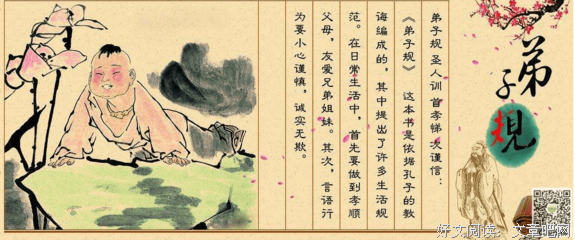Bowling Alone经典读后感有感
《Bowling Alone》是一本由Robert D. Putnam著作,Touchstone Books by Simon & Schuster出版的Paperback图书,本书定价:USD 18.00,页数:544,特精心从网络上整理的一些读者的读后感,希望对大家能有帮助。
《Bowling Alone》精选点评:
●Putnam一年的研究经费是几百万啊。话说Putnam 和 Pippa 在哈佛的办公室可只隔了十几米呢,笑
●为写research paper重读,没有当时读中文版时的激动,但对community问题有了新的、更深层次的想法。以及必须感谢一年多前这本书把我从思维困境中拉出,感谢它同《美国的民主》一起,让我重新梳理了对美国社会认知的途径。
●social capital译作“人际关系”或者“人脉”会比较好吧。社会资本什么的,一看就是翻译腔。
●年代感
●也许没有那么lonely
●it's a notice for folks who stuck online and don't even bother bowling but constantly blowing with themselves.
●虽然这本书在样本的选取方面值得商榷,批评他的文献也绝对不少,但毫无疑问他提出了一些很好的问题,提供了一些非常有趣的视角,更催生了很多非常有意义的跨时间、跨文化、多方法的讨论,而这就是这本书的魅力所在。Theory must be falsifiable, and that is the charm of it.
●画大饼画的又圆又漂亮(所有曲线都能精确下滑),颇有一种看图说话、指点江山的豪迈气概。这本书让我理解到一本糟糕的社会学著作能多么以偏概全、排列简单数据进行贸然因果推断来糊弄人。真不知普特曼和TV是有多大仇,坚持认为经济压力、城乡流动、交通距离(住宅区隔)、大众传媒(电视)、和年代差异才是抹杀了社会参与的缘由,逻辑论证那么简单真的不会出错吗?未来发展趋势如何从纯跑数据得出?社群研究那么大的话题,没有定性基础怎么观察?社会资本那么重要的话题,被你在第四部分简化成它有多么多么好,太不厚道(倒是虚拟社会资本很有意思)。第五部分历史水平不敢恭维,终章时甚至开始了“Let us..by 2010..”的呼吁,简直把我吓坏了。只画一块大饼自圆其说,根本无法让人满意。数据很惊人,Appendix值得围观 M
●social capital, bridging and bonding, civic disengagement.
●有些信息量,然而啰嗦冗长枯燥
《Bowling Alone》读后感(一):简单易读
这么有名的书,直到现在因为要引用,才总算借了读了。这本书其实读个一两百字的摘要就可以了,或者用一个副标题也能基本概括出来:美国社会里社会资本衰退的成因及后果。
我还是很喜欢Putnam的风格的,他写的东西结构层次很清楚,基本上就是三段论:成因、后果、解决,然后每一点下头再平行地展开了若干个方面。他也不喜欢太深奥、玄虚的空洞理论问题,研究都是简单但重要的社会现实,而且观点也没有那么复杂。此书我除了第一章是全文读下来的,之后所有的章节都是看看标题,然后快速扫过,因为里面的内容都是数据的罗列和分析,用以说明他的观点,看不看都一样,反正也记不住、也不关心。他用的数据主要是各类的调查,然后汇总成图表,一目了然。
如果有什么感想的话,那就是此书出版19年后,今天美国的情况只会更糟。他书中讲到的造成社会资本衰退的原因,比如电视、经济压力、代际更迭、人口往大城市的集中、政治的分裂,跟今天比完全是小巫见大巫,社会媒体、互联网,再加上这十几年来两党恶政造成的社会分裂、日益走火入魔的政治正确,现在只怕已经剩不下什么社会资本够折腾的了。而对于美国这么一个种族、文化多元的社会来说,一旦共同的价值理念和社会信任被削弱,要再恢复起来难度大得很。所以,正如Huntington所担忧的那样,美国接下来要面对的可能是国家内部的文明的冲突,甚至是全社会性的崩溃。走着瞧吧。
《Bowling Alone》读后感(二):强大的数据搜集能力,薄弱的社会模型
非常有名的一本书,不得不说作者的宏观数据搜集能力简直太强大,而且很多数据运用的背后有不少基于社会模型(分组)的定性控制,所以会让人觉得着实很全面(这点上比福山高明太多了)。但是这本书的缺点也很明显:作者并没有审查理论模型有没有问题,而是一个劲地用详细的数据填充模型,这导致理论模型一旦单薄,再厚实的数据都没法挽救,对社会资本的想象也过于含情脉脉。于是,就这本书而言,变得一部分不如一部分。
撇去作为导论的第一部分,描述现状的第二部分最让人信服(因为数据就能解决这个问题),解释导致现状原因的第三部分就开始出问题,作者甚至把代际更替当作一个原因,这个行为让我无法置信。毕竟代际更替只能证明两者相关性,而导致代际差异的因素才可能成为因果性中的一环。作者一共给出了4个原因(包括代际更替),但基本都在用数据做填充来证明是相关的,却很少讨论因果链——于是理论层面也有所欠缺。谈影响的第四部分更加了无新意,看到题目就知道结论(一些结论已经可以被现状否定了,虽然也就过了15年而已)。第五部分,只能说是作者想的太美好。总体而言,很多细节还是处理地不错的,虽然大框架有点问题,理论也不够深。
热爱定量和数据的人一定要读一读,更喜爱理论或定性的人,可以扫一眼,还是会有些许收获。第二部分第9章推荐给做社运的人。
《Bowling Alone》读后感(三):卡拉永遠OK
帕特南為社會資本列出的三個主要方面是規範、網絡,与信任。他在世紀轉折點看到的美國是一個社會資本日漸衰落的社會。在讀這本書的時候,我時不時地触碰到一些新鮮的活例,這讓閱讀過程中的思考略顯輕鬆。
一個在美國工作的朋友回國,一兩年前抱定辭職回國發展的念頭繼續動搖,我懷疑那個念頭隨著飛機升降會不會越來越像一顆鬆動的牙齒。導致鬆動的原因之一是她感到這個社會里的信任正日益稀薄。但與此同時,她在回國期間并沒有忘記聯絡舊同事喝茶吃飯,因爲如另一位美國學者林南在他的《社會資本》一書序言中鳴謝杜克大學同事時所說,“你們是我重要的社會資本”——或許有朝一日她終于决定回國謀職,他們將是她重要的社會資本。早年我的一個好友曾經說過一句令我驚异多年的話,大意是,友誼只有在互相利用的基礎上才能得到鞏固。我用了好幾年的時間去不停揣摩這句話的含義,設想過許多不同的角度和情勢,最終仍然無法徹底接受這一觀點,或許我更願意從集體意義而非個體意義上理解社會資本与社會網絡,也但願如此鞏固的友誼能够在整體上構成導致社會良性循環的重要元素。
事實上,社會資本概念本身的龐雜和運用語境的多元幷非三言兩語可以解釋。我們自己身處的社會無需統計數據也可體會到信任度的每况愈下,與此同時,太多人無疑能够意識到個人社會資本的重要性而熱衷于構建或大或小的社會網絡。相比之下,市民的社區參與与自願性組織參與等需要大型調查才可顯現整體態勢的方面或許多少也會因爲社會制度與西方社會的差別而不易解釋。有趣的是,在看到美國人社區參與的一部分時,我開始不停地想風行了十餘年卻仍未减退熱度的卡拉OK。從最初的街頭卡拉到歌廳里兩塊錢點一首歌然後上臺獻唱給相熟与陌生的聽衆到今日遍布各大小城市的KTV,卡拉的變化本身不免也意味著社會資本的變化。
《Bowling Alone》读后感(四):Social capital and communication
The definition of social capital
There is not a unified definition of social capital. The term was first used by Eugen von Böhm-Bawerk in 1895. Böhm-Bawerk is a member of Austrian School of economics. He used the term as the opposite of “private capital”, apparently, which is different from its current meaning.
According to Putnam(Putnam 2001), L.J.Hannifan is the first one who uses the contemporary meaning of the term social capital, hereafter different scholars again and again rediscovered and used this concept. Among whom, Pierre Bourdieu is one of the most important people, he thought social capital as the investment paid by individuals of the ruling classes for his identity in the process of maintaining and reproducing the ruling class(Portes 2003).
James Coleman(Coleman 1988) defined the term as actor’s social structure resources, it is composed by some aspects of the social structure and will bring benefit to the actor. According to his definition, the social relationships including obligation, expectation, social network, norms and punishment, power relationship, organization established intentionally are part of the social capital. Different from other scholars, Coleman laid emphasis on social capital’s common goods property, which means that Coleman paid more attention to the collective or community rather than on the individual, because everyone cares about his own benefit and has a strong motivation to be a free rider which will lead to the collapse of the social capital of one community.
It’s Putnam who makes the concept of social capital take off in the process of its own diffusion of innovation process. He thinks the social capital as the mixture of social networks and social trust, the two elements can promote the individual’s cooperation in the process of achieving the collective goals(Putnam 2001).As a political scholar, Putnam emphasized the influence of social capital on the political participation, you can find that he gave priority to the public goods property of social capital too.
ocial network analysis plays an important role in the development of the concept of social capital. The scholars who worked on social network analysis contributed a lot to the development of the concept. Granovetter distinguished the concept of weak tie and strong tie, this paved the way for classification of social capital. His weak tie theory argued that the weak network relationship is more important in the process of finding a new job than strong ties(Granovetter 1973).Burt put forward the concept structural hole(a structural hole is a relationship of non-redundancy between two contacts), the actor who occupies structural hole has more information and control advantage, on this basis, Burt defined social capital as the relationship among players.(Burt 1995).Actually the structural hole theory responds to Granovetter’s weak tie theory, a network composed by strong ties lack the structural holes, the information is not diverse and circularly flows in the closed network, so it will not take diverse information to the actor. Bian Yanjie emphasized the concept of strong tie’s function in China society where the relationship is much more important than the west(Bian 1997).
Lin Nan defined social capital as resources embedded into the network(Nan 2001). Fukuyama emphasized the concept of social trust, based on this he defined social capital as one kind of strength which is produced by the whole or part of the social trust. The social capital exists in both home and country.
The theoretical element of the concept
I generalize the theoretical focus in the table below.
types representative Core idea
ocial network Granovetter Weak tie
urt Structural hole
IAN Yanjie Strong tie
ocial resource Lin Nan resource
ocial trust Fukuyama trust
ocial class Bourdieu Maintain and reproduction of the ruling class
ublic goods Coleman Public goods
utnam Collective property
Table 1 The classification of Social capital theory
Why the concept of social capital is essential for communication science?
The concept is important for the function of social capital: the exchange between social capital and another form of capital, its influence on other forms of capital, getting instrumental return and emotional return, it can promote public participation and social support, lessening the transaction cost, it can influence the diffusion of innovations, its negative effect.
Most of communication researches lie in the context of individual interaction which will be influenced by social capital.
(social network sites) emergences as a new form of media and draw many communication researchers’ attention.
Quotation:
“Boschma is white and Lambert is African American. That they bowled together made all the difference."(Putnam 2001)
otes: Boschma donated one of his kidneys to Lambert.
ian, Y. 1997. Bringing strong ties back in: Indirect ties, network bridges, and job searches in China. American Sociological Review 62 (3):366-385.
urt, R. S. 1995. Structural holes: The social structure of competition: Harvard Univ Pr.
Coleman, J. S. 1988. Social Capital in the Creation of Human Capital. American Journal of Sociology:95-120.
Granovetter, M. S. 1973. The strength of weak ties. ajs 78 (6):1360.
an, L. 2001. Social capital: A theory of social structure and action. New York: Cambridge UP.
ortes, A. 2003. Social capital: its origins and applications in modern sociology.
utnam, R. D. 2001. Bowling alone: The collapse and revival of American community: Simon and Schuster.
